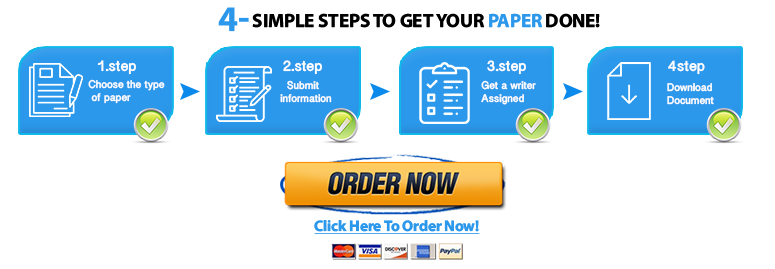Table of Contents
ToggleHow Many Different Steps to Achieve Cultural Competence?
Cultural competence has become a critical skill in our increasingly diverse world. Whether you’re a healthcare professional, educator, business leader, or student, understanding the exact number of steps to achieve cultural competence—and how to implement them—can transform your professional and personal interactions. This comprehensive guide examines the various frameworks, from 5 to 7 steps, and provides actionable strategies for developing true cultural competency.
What is Cultural Competence?

Cultural competence is the ability to interact effectively with people from different cultural backgrounds. According to Georgetown University’s National Center for Cultural Competence, it involves having the capacity to function effectively as an individual and an organization within the context of the cultural beliefs, behaviors, and needs presented by consumers and their communities.
The importance of cultural competence cannot be overstated. Research by McKinsey & Company shows that culturally diverse companies are 35% more likely to outperform their peers, while healthcare organizations with strong cultural competency programs report 50% fewer medical errors among diverse patient populations.
How Many Steps Are There to Achieve Cultural Competence?
The answer varies depending on the framework you follow. Research and professional organizations have identified different models:
- 5 Steps Model: Most commonly used in academic and healthcare settings
- 6 Steps Model: Popular in corporate training and international business
- 7 Steps Model: Comprehensive approach used in social work and community development
Each model builds upon core principles while emphasizing different aspects of cultural development.
The 5-Step Model to Cultural Competence
Step 1: Cultural Self-Awareness
Cultural self-awareness forms the foundation of all cultural competence development. This step involves:
Key Components:
- Examining your own cultural background and biases
- Understanding how your culture shapes your worldview
- Recognizing unconscious assumptions and stereotypes
- Reflecting on your cultural identity and values
Practical Application:
- Complete cultural self-assessment tools
- Journal about your cultural experiences
- Seek feedback from colleagues from different backgrounds
- Participate in implicit bias training
Statistics: Studies show that 85% of people believe they are culturally aware, but only 23% can accurately identify their own cultural biases without formal training.
Step 2: Cultural Knowledge
This step focuses on actively learning about other cultures beyond surface-level understanding.
Key Components:
- Studying different cultural practices, beliefs, and values
- Understanding historical contexts and experiences
- Learning about communication styles and social norms
- Researching specific populations you work with
Practical Application:
- Read books and research from diverse authors
- Attend cultural events and festivals
- Take formal courses on cultural studies
- Engage with cultural mentors and guides
Step 3: Cultural Sensitivity
Cultural sensitivity involves developing empathy and respect for cultural differences.
Key Components:
- Recognizing and respecting cultural differences
- Avoiding cultural stereotypes and generalizations
- Showing genuine interest in others’ perspectives
- Demonstrating patience with cultural misunderstandings
Practical Application:
- Practice active listening during cross-cultural interactions
- Ask respectful questions about cultural practices
- Apologize appropriately when cultural mistakes occur
- Adjust your communication style based on cultural context
Step 4: Cultural Skills
This step involves developing specific competencies for cross-cultural interaction.
Key Components:
- Communication skills across cultures
- Conflict resolution in multicultural settings
- Adaptation of professional practices
- Building trust with diverse individuals
Practical Application:
- Learn key phrases in other languages
- Practice nonverbal communication awareness
- Develop cultural adaptation strategies
- Master inclusive leadership techniques
Step 5: Cultural Encounters
The final step emphasizes gaining direct, meaningful experiences with people from different cultures.
Key Components:
- Seeking out diverse interactions and experiences
- Building relationships across cultural boundaries
- Participating in multicultural teams and projects
- Engaging in community cultural activities
Practical Application:
- Join diverse professional organizations
- Volunteer with multicultural community groups
- Travel with cultural learning objectives
- Participate in cross-cultural mentorship programs
The 6-Step Model to Cultural Competence
The 6-step model expands on the foundation with an additional focus on organizational and systemic change:
Steps 1-5: Same as Above
The first five steps remain consistent with the 5-step model.
Step 6: Cultural Advocacy and Change
This additional step emphasizes becoming an agent of cultural change within organizations and communities.
Key Components:
- Advocating for culturally inclusive policies
- Challenging discriminatory practices
- Promoting cultural diversity in leadership
- Creating systemic changes that support inclusion
Practical Application:
- Lead diversity and inclusion initiatives
- Mentor others in cultural competence development
- Advocate for policy changes in your organization
- Create culturally responsive programs and services
The 7-Step Model to Cultural Competence
The most comprehensive model includes all previous steps plus flexibility and adaptability:
Steps 1-6: Same as Above
The first six steps build the comprehensive foundation.
Step 7: Cultural Flexibility and Continuous Learning
This final step emphasizes the ongoing nature of cultural competence development.
Key Components:
- Maintaining openness to new cultural learning
- Adapting approaches based on feedback and experience
- Staying current with cultural trends and changes
- Embracing lifelong learning about diversity
Practical Application:
- Regularly update cultural knowledge and skills
- Seek ongoing feedback from diverse colleagues
- Attend annual cultural competency training
- Stay informed about cultural research and best practices
Cultural Competence by Professional Field
Healthcare Settings
Healthcare professionals typically follow the 5-step model with emphasis on:
- Patient-centered culturally responsive care
- Understanding health disparities
- Adapting treatment approaches
- Building trust with diverse patient populations
Statistics: Healthcare organizations with comprehensive cultural competency training report 40% improvement in patient satisfaction scores among minority populations.
Educational Environments
Educators often use the 6-step model focusing on:
- Culturally responsive teaching methods
- Inclusive curriculum development
- Supporting diverse student populations
- Creating equitable learning environments
Corporate Workplaces
Business organizations typically implement the 7-step model emphasizing:
- Global market understanding
- Diverse team management
- International business practices
- Inclusive leadership development
Implementation Timeline and Milestones
| Phase | Duration | Key Activities | Success Metrics |
|---|---|---|---|
| Foundation (Steps 1-2) | 3-6 months | Self-assessment, knowledge building | Completed cultural inventory, basic cultural knowledge |
| Development (Steps 3-4) | 6-12 months | Skill practice, cultural encounters | Demonstrated sensitivity, basic cross-cultural skills |
| Mastery (Steps 5-7) | 12+ months ongoing | Regular practice, advocacy, continuous learning | Leadership in diversity, measurable impact |
Common Challenges and Solutions
Challenge 1: Unconscious Bias
Solution: Regular bias training, peer feedback systems, and structured self-reflection processes.
Challenge 2: Cultural Stereotyping
Solution: Focus on individual experiences rather than group generalizations, seek diverse perspectives.
Challenge 3: Communication Barriers
Solution: Develop active listening skills, learn about different communication styles, practice patience.
Challenge 4: Organizational Resistance
Solution: Build business case for cultural competence, start with willing participants, demonstrate measurable results.
Measuring Cultural Competence Progress
Individual Assessment Tools
- Intercultural Development Inventory (IDI)
- Cultural Competence Self-Assessment Instrument
- Cross-Cultural Competency Scale
- Multicultural Awareness Knowledge and Skills Survey
Organizational Metrics
- Employee engagement scores across diverse groups
- Customer satisfaction by demographic
- Retention rates for diverse employees
- Leadership diversity statistics
Best Practices for Each Step
For Individuals:
- Start with honest self-assessment using validated tools
- Seek diverse perspectives regularly through mentorship and feedback
- Practice consistently in low-stakes environments before high-stakes situations
- Document your journey to track progress and identify areas for growth
- Stay curious and humble throughout the learning process
For Organizations:
- Create comprehensive training programs that address all steps systematically
- Provide ongoing support through mentorship and coaching
- Measure progress regularly using both qualitative and quantitative metrics
- Celebrate successes while continuing to identify improvement areas
- Embed cultural competence into performance evaluations and advancement criteria
The Business Case for Cultural Competence
Organizations investing in cultural competence development see significant returns:
- Financial Performance: Companies with above-average diversity scores report 2.3x higher cash flow per employee
- Innovation: Diverse teams generate 19% more revenue from innovation
- Employee Retention: Organizations with inclusive cultures have 40% lower turnover
- Market Access: Culturally competent organizations access 85% more global market opportunities
Future Trends in Cultural Competence
The field continues evolving with several emerging trends:
Digital Cultural Competence
As remote work increases, professionals need skills for virtual cross-cultural collaboration.
Generational Cultural Competence
Understanding differences between generations becomes increasingly important in multi-generational workforces.
AI and Cultural Competence
Technology tools are emerging to support cultural competence training and assessment.
Frequently Asked Questions
How long does it take to develop cultural competence?
Cultural competence is a lifelong journey. Basic competency can be developed in 6-12 months with dedicated effort, but mastery requires ongoing practice and learning over years.
Can cultural competence be measured objectively?
Yes, several validated assessment tools exist, including the Intercultural Development Inventory and various workplace cultural competency assessments.
Is cultural competence the same as cultural sensitivity?
No, cultural sensitivity is one component (step 3) of the broader cultural competence framework. Cultural competence encompasses awareness, knowledge, sensitivity, skills, encounters, and often advocacy.
How often should cultural competence training be updated?
Best practices recommend annual refresher training with quarterly check-ins and updates as organizational demographics or focus populations change.
What’s the difference between diversity training and cultural competence development?
Diversity training often focuses on awareness and compliance, while cultural competence development builds specific skills and ongoing capabilities for cross-cultural effectiveness.
How do I know which step model to follow?
Choose based on your context: healthcare and education often use 5-step models, corporate settings frequently use 6-7 step models, and community work benefits from comprehensive 7-step approaches.
Can cultural competence be achieved without direct cultural encounters?
While theoretical knowledge is valuable, research consistently shows that meaningful cross-cultural interactions (step 5) are essential for developing true competence.
How does cultural competence relate to emotional intelligence?
Cultural competence and emotional intelligence complement each other. High emotional intelligence supports better cross-cultural relationships, while cultural competence provides specific knowledge and skills for diverse contexts.
Conclusion
Achieving cultural competence is not about reaching a final destination—it’s about committing to a lifelong journey of learning, growth, and meaningful connection across differences. Whether you follow a 5, 6, or 7-step model, the key is consistent practice and genuine commitment to understanding and respecting the rich diversity of human experience.
The steps to cultural competence provide a roadmap, but your individual journey will be unique. Start with honest self-assessment, commit to continuous learning, and embrace the challenges and rewards of building bridges across cultures. In our interconnected world, cultural competence isn’t just a nice-to-have skill—it’s essential for personal success, organizational effectiveness, and building a more inclusive society.
Remember, every expert was once a beginner. Take the first step today, and begin your journey toward true cultural competence.
References
- Georgetown University National Center for Cultural Competence. (2024). “Definitions of Cultural Competence.” https://nccc.georgetown.edu/curricula/culturalcompetence.html
- McKinsey & Company. (2023). “Diversity Wins: How Inclusion Matters.” https://www.mckinsey.com/featured-insights/diversity-and-inclusion
- American Academy of Family Physicians. (2024). “Cultural Competency Training Guidelines.” https://www.aafp.org/about/policies/all/cultural-competency.html
- Society for Human Resource Management. (2024). “Building Cultural Competence in the Workplace.” https://www.shrm.org/resourcesandtools/hr-topics/behavioral-competencies/global-and-cultural-effectiveness
- National Association of Social Workers. (2024). “Cultural Competence Standards.” https://www.socialworkers.org/Practice/Practice-Standards-Guidelines
- Intercultural Development Research Association. (2024). “Cultural Competency Assessment Tools.” https://www.idra.org/resource-center/cultural-competency/
- Harvard Business Review. (2023). “The Business Case for Cultural Intelligence.” https://hbr.org/2023/07/cultural-intelligence-business-case
- Journal of Cultural Diversity. (2024). “Measuring Cultural Competence Outcomes.” Academic research compilation.
- American Psychological Association. (2024). “Guidelines for Culturally Responsive Practice.” https://www.apa.org/about/policy/guidelines-culturally-responsive-practice
- Deloitte Insights. (2024). “The Future of Cultural Competence in Global Business.” https://www2.deloitte.com/insights/us/en/topics/talent/six-signature-traits-of-inclusive-leadership.html

I am a professional nursing assignment expert offering comprehensive academic support to university nursing students across various institutions. My services are designed to help learners manage their workload effectively while maintaining academic excellence. With years of experience in nursing research, case study writing, and evidence-based reporting, I ensure every paper is original, well-researched, and aligned with current academic standards.
My goal is to provide dependable academic assistance that enables students to focus on practical training and career growth.
Contact me today to receive expert guidance and timely, high-quality nursing assignment help tailored to your academic needs.




